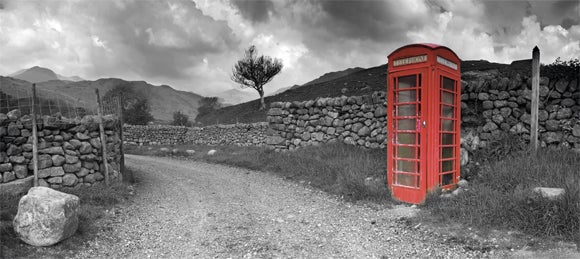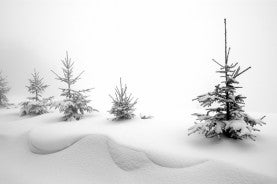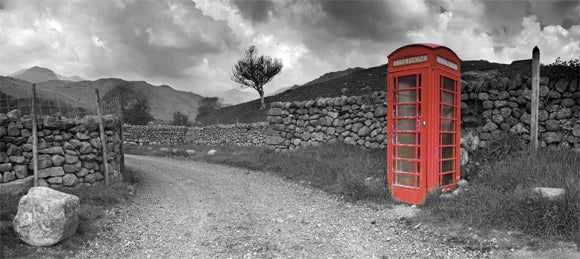page 4

Add colour
There are two ways to add colour to a b&w image. Toning an image preserves the glamour and simplicity of the original greyscale, but can result in a more expressive rendering of the subject. The most popular tones are blue and sepia.
The second method is to apply selective colour to highlight points of interest. It’s as simple as it is effective. Here’s how to do it:
METHOD 1
Open your image and in Elements go to: Enhance > Adjust Colour > Adjust Hue/Saturation (Photoshop: Image > Adjustments > Hue/Saturation). Tick the Colourise box. Adjust the
Hue slider for a colour change, the Saturation slider for the strength of colour and the Lightness slider for overall exposure.
METHOD 2
If you want to selectively add new colours, create an additional Hue/Saturation Adjustment Layer and set this to your chosen colour. Now, from the tool bar, choose the rubber and use it to expose the colour beneath, leaving the new hue where you want it. Use Opacity to control the strength of the rubber. You can add as many adjustment layers as you like this way, just remember to: Layer > Flatten Image, when finished.


High-key & Low-key
The techniques of both high- and low-key lighting lend themselves naturally to black & white. A high-key image is conventionally bright, and composed primarily of highlight tones. To achieve this look, seek out naturally light subjects, being careful to ensure that your camera meter doesn’t turn your bright areas into mushy grey (you may have to set +1 stop exposure compensation or more). Or overexpose to make your shadows midtones, and your midtones highlights. This technique can be great for high-key mono portraits.
The opposite is true for low-key images, which are conventionally dark, comprising of a range of either dark, or completely black, areas punctuated with highlights to complete images with extended contrast. Normally a singular, directional light-source in a room with little or no available light will produce the best results. Again, the technique is suited perfectly to black & white, with portraiture and still-life being the easiest and most rewarding subjects upon which to attempt it.





